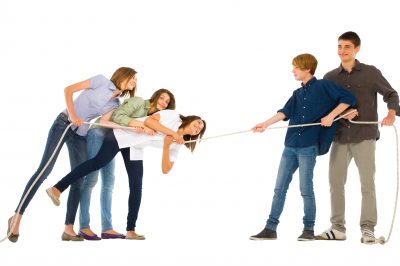 People leave churches for all kinds of reasons. But when Jimmy bit Chelsea during the praise and worship time, Chelea’s family neeeded a little more grace and a better understanding of child development.
People leave churches for all kinds of reasons. But when Jimmy bit Chelsea during the praise and worship time, Chelea’s family neeeded a little more grace and a better understanding of child development.
Biting and hitting, though never acceptable behaviors, are normal behaviors for children between the ages of one and two. Developmentally, toddlers are exploring their world through the mouth, a source of pleasure and power. They also may be teething (biting feels good on swollen gums), needing attention (negative attention is attention) or imitating others. Biting and hitting are ways to express emotions and relieve immediate frustration, anger or other uncomfortable feelings. And biting and hitting are also ways of coping with an environment that is too stimulating or overcrowded and isn’t working for the child.
In order to help a toddler stop hitting or biting, adults must understand these behaviors from the perspective of the child. Toddlers are impulsive and lack self-control. They are easily frustrated or upset and do not talk about their feelings. They simply react. They are not trying to purposely hurt another child, but use sounds and actions to communicate how they feel, express autonomy and to control others. And because of their age, they don’t fully understand the concept of hurting another child. So when a child takes a toy, pushes, or refuses to cooperate, the toddler may hit or bite that child. That’s when adults should intervene and teach toddlers how to better handle their frustrations and prevent hurtful behavior.
To do so, one must figure out when, why and with whom the biting occurs. For example, if a nursery is overcrowded and toys must be shared, this could trigger biting or hitting. Intervening would require keeping a watchful eye on the play, reminding children not to bite, and praising cooperative behavior. Teaching children to share what is available would also be important. In other cases, simple fixes like giving a child a teething ring, a needed nap, snacks for hunger and teaching him or her to say “Mine” or “No” during play can prevent biting and hitting. No matter the trigger, the best approach is to stay calm, stop the behavior and direct attention to the hurt child.
Finally, be clear in a group setting and in your family as to how biting and hitting will be handled before these behaviors occur. If biting and hitting do not improve within a few days or weeks of intervention, then these behaviors could signal a more serious issue that may need additional intervention by a mental health or health provider. Most often, these behaviors will pass as the child grows and is positively guided by loving adults.


